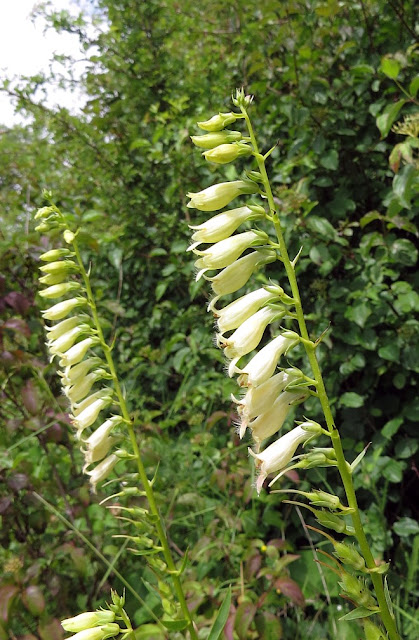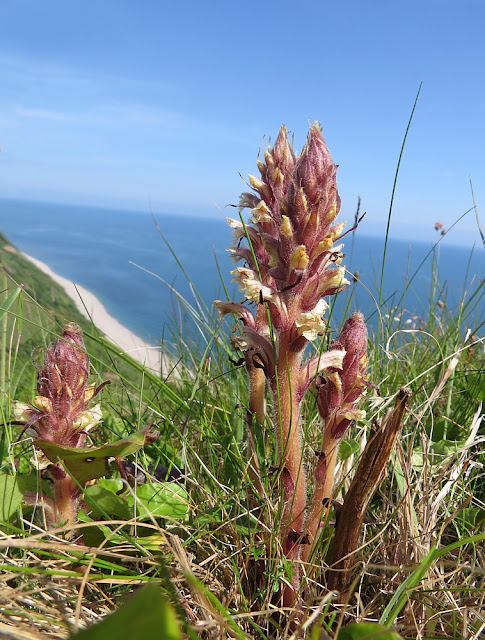A new favourite walk for me is the one which goes along the clifftops to the west of Sidmouth and the east of Weston, an area called Dunscombe Cliffs. There is also a deep valley called Lincombe with a good area of marshy ground at the bottom. A large part of the area is National Trust but unlike Salcombe Hill it isn't packed with people the whole time. It isn't totally secluded though as it forms part of the Southwest Coast Path. That said, most people stick to the well trodden path. I've seen some nice butterflies and wildflowers there in the last couple of weeks, but the wildflowers are having to contend with the attentions of six Exmoor ponies, so there aren't as many as I'd have hoped for. The few that have survived are either right on the cliff edges or on very steep parts wher the ponies spend less time grazing.
Looking down into Lincombe.
I went down to explore the marshy area at the bottom a couple of weeks ago.
The ponies were down there on this occasion and had eaten a lot of the vegetation but I was able to find a couple of nice flowers.
Southern Marsh Orchid - Dactylorhiza praetermissa
Ragged Robin - Silene flos-cuculi
A few days ago I went looking for wildflowers on the cliff top area and did quite well considering the ponies have grazed the turf really short in places.
Here they are again on the fascinating hummocky terrain of Dunscombe Cliff.
These humps and hollows are the remains of the lime working which went on here for centuries.
The only areas where I could find flowering plants were the steepest slopes like this one.
Common Cudweed - Filago vulgaris
Common Rock Rose - Helianthemum nummularium
Salad Burnet - Sanguisorba minor
Male flowers.
Long-stalked Cranesbill - Geranium columbinum
View to the east showing Weston Cliff and beach.
And to the west showing Dunscombe cliffs The headland in the distance is Straight Point.
There were some nice flowers on these cliff edges including...
Lots of the local specialty Nottingham Catchfly - Silene nutans
Ivy Broomrape - Orobanche hederae
On Monday I went over to Exmouth sea front to look for a flower that I'd been told about four years ago! Better late than never. That flower was
Bithynian Vetch and was one I've never seen before, I was surprised to find it so easily given my information was four years out of date. A real bonus was another new plant for me in the shape of
Pale Flax. So a really worthwhile short trip!
Bithynian Vetch - Vicia bithynica
Pale Flax - Linum bienne























































